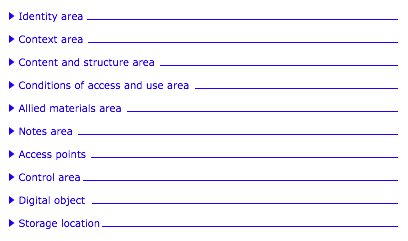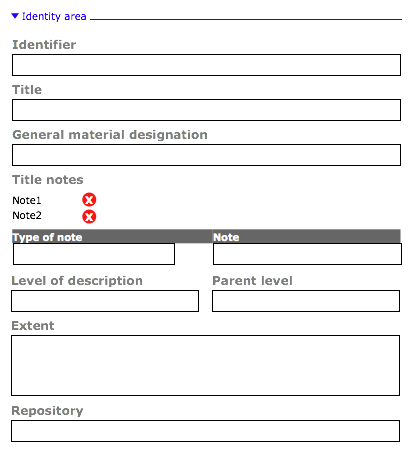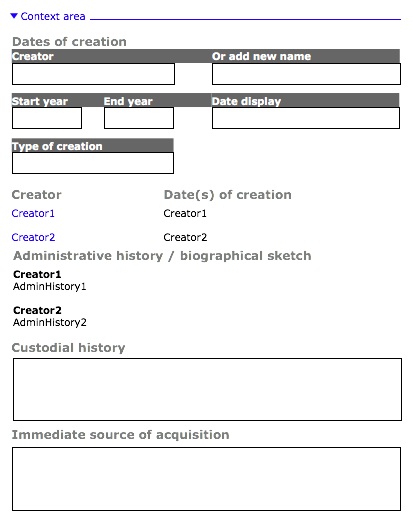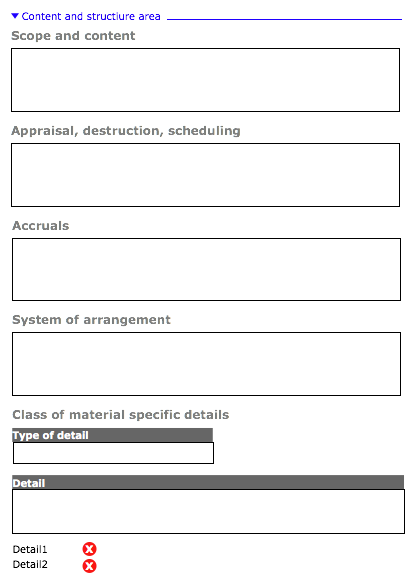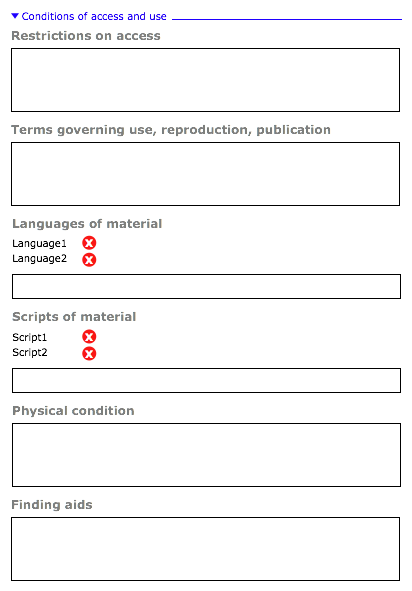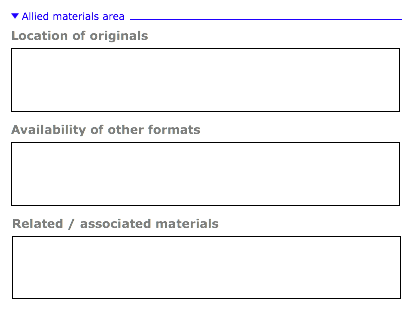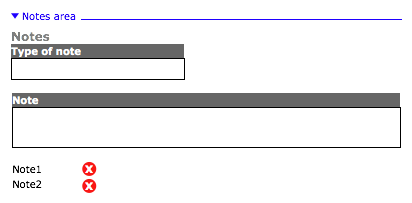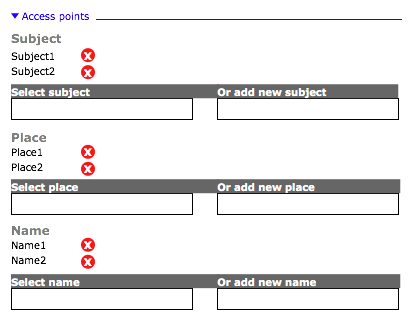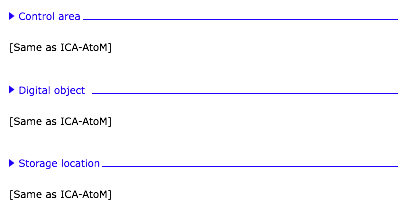Template:RAD ISAD(G)ed
Please note that ICA-AtoM is no longer actively supported by Artefactual Systems.
Visit https://www.accesstomemory.org for information about AtoM, the currently supported version.
Main Page > BCAUL pilot project > Templates
RAD template: ISAD(G)edDocument status: in progress
|
Contents |
Overview
The purpose of this template is to provide an interface for archival description that uses the elements and field labels of the Canadian Rules for Archival Description (RAD), but organizes them according to the areas of description in ISAD(G).
The main motivations are:
(1) RAD includes several areas of description and many elements that are only marginally relevant to typical aggregate-level description. E.g. 3 of RAD's nine areas (1.2, 1.6, 1.9) are applicable only at the item level. Another area (1.3) applies only to specific media (cartographic records, architectural and technical drawings, philatelic records). A number of elements in the date and title areas (1.4 and 1.1) relate only to the description of published items. In terms of interface, this is a lot of real estate to give to elements not frequently used. On the other hand, a single area (1.8, Notes) includes a large number of elements that are commonly employed. The ISAD(G) organization distribute elements more evenly.
(2) ISAD(G) includes 2 elements (3.3.2 Appraisal, destruction, and scheduling information and 3.5.4 Publication note) that have no RAD-equivalents. An ISAD(G)-based organization gives those Canadian archivists who so wish an opportunity to incorporate these into their descriptive practices.
(3) An ISAD(G)-based template for RAD promotes harmonization of Canadian and international descriptive standards.
While this implementation follows ISAD(G)'s structure, all RAD elements are accommodated. Where no ISAD(G) equivalent exists, these are handled via Qubit notes, events or custom fields (properties).
Identity area
This div corresponds to ISAD(G) area 3.1.
Qubit-required fields with no RAD equivalents:
- Identifier
- Level of arrangement
- Parent level
- Repository
RAD fields that map to ISAD(G):
- Title (RAD 1.1B / ISAD(G) 3.1.2)
- Extent (RAD 1.5B / ISAD(G) 3.1.5)
Unique RAD fields handled by Qubit properties:
- General material designation (RAD 1.1C)
This div follows the Qubit ISAD(G) template by including a section to add title notes.
Context area
This div corresponds to ISAD(G) area 3.2. Qubit associates creators to a body of archival materials and implements date range through events linked to actors. The follows Qubit's ISAD(G) template, substituting RAD labels.
The template does introduces one new field to the interface not in the current ISAD(G) version: Type of creation
- Use to specify the type of creator-relation / creation event.
- Allows distinction between e.g. dates of creation and dates of accumulation.
- Allows handling of RAD Statements of responsibility (item-level only).
Content and structure area
Conditions of access and use area
Allied materials area
Notes area
Access points
